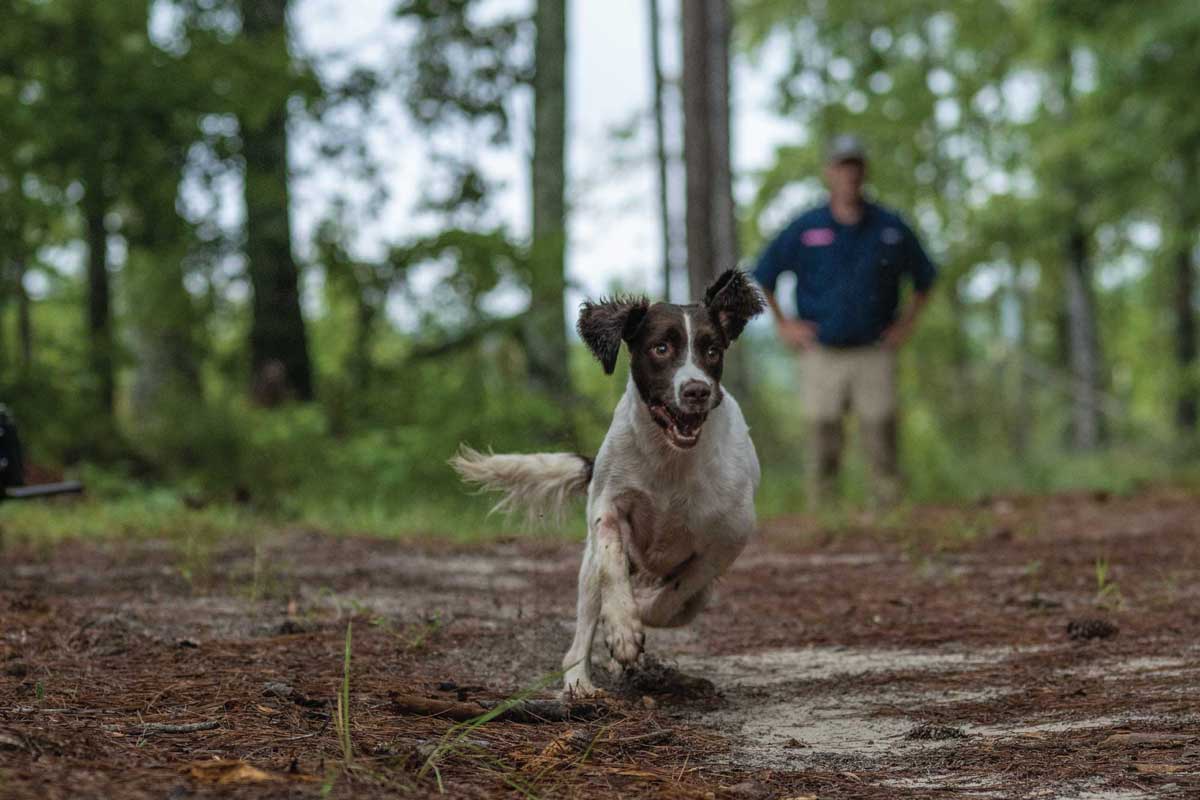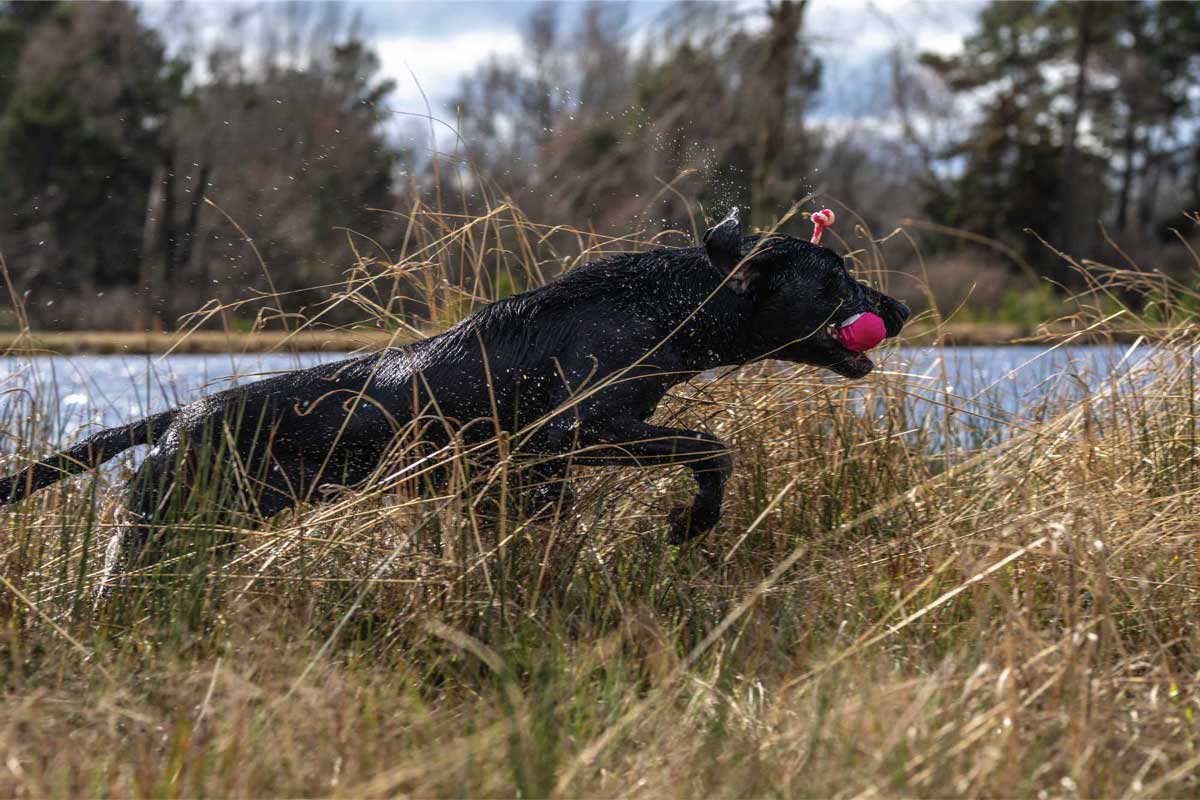SPONSORED CONTENT: EUKANUBA
It won’t be long before field training, conditioning and obedience work give way to the true satisfaction of being back in the woods and fields enjoying the hunt with our canine companions. Here are a few final steps that some Eukanuba™ pro trainers take to get their dogs ready for the season opener.

Chris Akin of Webb Footed Kennel, Arkansas
Specialty: Training and competing with Labrador retrievers.
1. Get Real
“You’ve been training your dog over at the high school field and in grandma’s backyard, and he’s doing good. But those places aren’t duck-hunting environments. Just before the season I’ll make sure to spend time with dogs in real hunting conditions. Head to the blind, splash your duck boat, and work your dog from there. Just before the season starts is prime time for getting a dog focused to hunt. After a summer of training at the kennel, it’s time to get the dog used to the places where the hunt actually happens.”
2. Blind Ambition
“We’re excited, we’ve got hunting season coming up, and you’ll be in the blind with a hunting buddy or your wife, son, or daughter. Work your dog from your blind or boat so he’ll get used to the environment. But bring along different people and different voices so a dog gets used to being around other folks. Let others throw a dummy and move around in the blind. Working from a blind or boat is really a practice drill, and it’s just another step in the crawl, walk, run of training.”
3. Repeat, Repeat, Repeat
“Training isn’t a one-day deal, and you should get your dog out to the hunting area as many times as possible before the start of the season. For example, when I have a dog that’s never been in a johnboat, I take my time, put the dog on a lead and encourage her to get in, put her in a certain spot in the boat, and proceed as if this were a duck hunt. I want my dog sitting to the left side of me in the boat, and I don’t want her moving around. So we’re setting the precedents today, just as we do when we’re starting duck season.”

Stephen Faust of Stoneybrook Outfitters & Gordon Setters, North Carolina and Minnesota
Specialty: Breeding, training, and guiding grouse and woodcock hunts with Gordon setters.
1. Fitness Matters
“To me, the most important thing is making sure that you and your dog are physically fit. You both have to be ready to go so you can hunt every day and so that your dog has the stamina to handle wild birds. I feed my dogs Eukanuba™ Premium Performance 30/20 SPORT year-round, and since I run them every day, I don’t need to change their diet. I think that’s key: that their muscles are in good shape.”
2. Train Where You Hunt
“I train where I hunt, so that means that I train in the woods. If you’ve been training in places different from the areas in which you hunt, then log some time in your areas. It’s especially important for dogs entering their first season, because that exposure helps them know what is expected of them. If they’re going to work in alder or poplar whips, jump over logs and stone walls, and run through streams, then expose them to those things. Those final touches take the edge off on opening day by getting them ready for what is ahead.”
3. Team Up
“A final prep is to think about which dogs you’ll hunt in which areas. By matching a dog’s type of run to the type of area in which he’ll hunt, you’ll get more out of your dog. Putting an old dog into a thick grouse cover might not make sense, especially because a younger, harder charger is up for the task. Run the older dogs in looser and smaller covers for success. If you’ve got young dogs, match them with an older, more experienced dog. A puppy new to hunting benefits from being with an older dog who can show him how to hunt, how to find birds, and how to point. Some of those lessons are best taught by a dog who has the experience to pass it along.”

Todd Agnew, Craney Hill Kennel, Georgia
Specialty: Training and competing field-bred English springer spaniels and English cocker spaniels.
1. Plan to Peak
“We work backward, so if we’re trying to peak in October, we start our training program in mid-summer. The dogs have been running for months, with conditioning lasting for up to 45 minutes. Handling and bird drills are mixed in as well. We start slow and build up so that we can peak right when the hunting season kicks off.”
2. Feed Accordingly
“We start feeding the dogs for hunting at least six weeks out to help them acclimate to the physical demands and the mental stress of hunting season. For most of the year we feed Eukanuba™ Premium Performance 26/16 EXERCISE. But before we begin to ramp up we’ll transition to Eukanuba™ Premium Performance 30/20 SPORT. They’ll be working hard, so that extra protein and fat is a big asset. But it takes several weeks for the body to get the nutritional benefits, and that’s why we start well in advance of opening day.”
3. Fine-Tune Delivery
“I consider retrieving a matter of obedience, but marking is important for dogs to learn, too. As we get closer to the season, I work with my dogs to improve their focus and do that by working on retrieving and marking.”
Our favorite time of year is quickly approaching, so it’s time to start winding down the heavy training and put on the finishing touches. Follow @eukanubasportingdog on Instagram for more final training drills from the Team Eukanuba™ pros.




